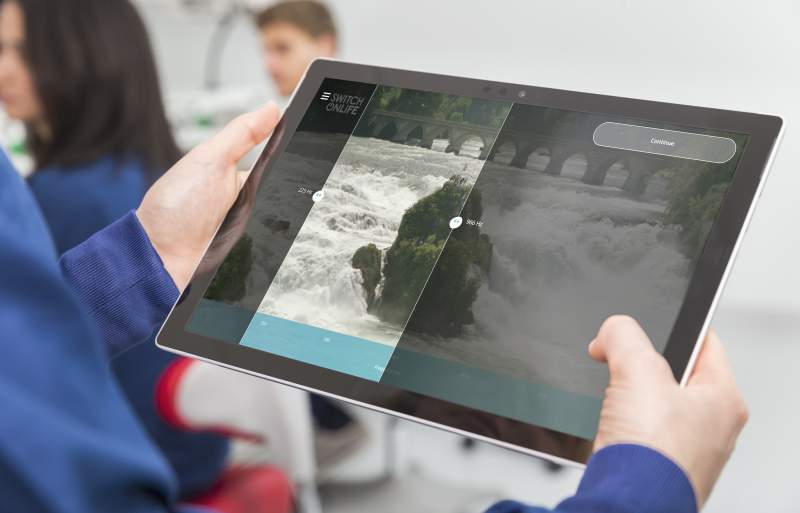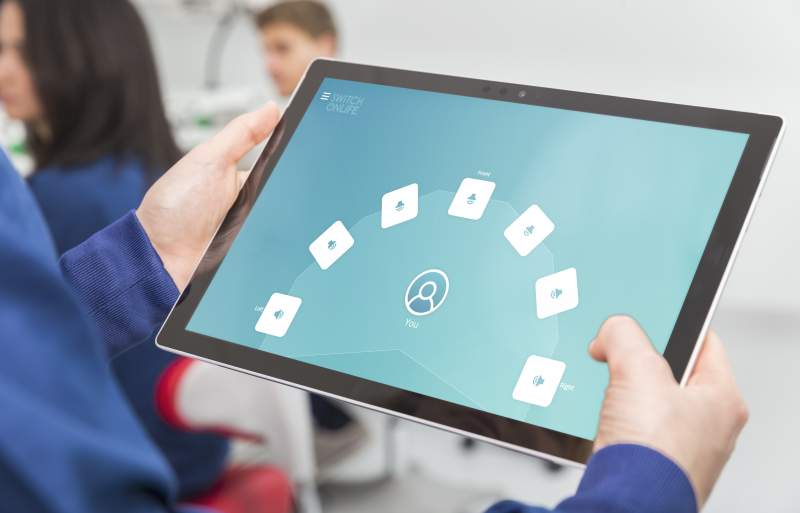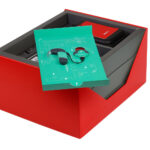MED-EL
Published Aug 26, 2021
Switch on Life: An Interactive Hearing Game

Switch on Life offers young people and adults a playful way to learn about the science and technology behind hearing implants. Originally designed to simulate everyday life with hearing loss to the friends and family members of cochlear implant candidates and recipients, the online learning platform has also become popular among educators and their students as well as hearing professionals and hearing loss support groups.
The Switch on Life platform, which is free for anyone to access, immerses visitors in an engaging and challenging educational experience. With a mix of videos and different interactive educational games, players face a series of hearing tasks and challenges with each demonstrating different specific aspects of hearing loss and hearing technology. Switch on Life offers visitors a rare chance to learn how cochlear implant technology works from some of the world’s leading scientists and experts in hearing implant research and development.
Monaural Versus Binaural Hearing Games
In the first two games, Meet Your Friends and Spatial Hearing, players are asked to complete tasks—some with full binaural hearing and some with monaural hearing, as someone with unilateral hearing loss might experience the situation. Meet Your Friends, simulates a group conversation in a noisy restaurant. While listening, players periodically encounter challenges.
For example, they might be asked to locate the source of a sound or answer questions to test their ability to understand the conversation taking place between their friends. Players are likely to notice that, when they can hear with only one ear, following the conversation and trying to get the right answers to the listening comprehension questions is very difficult as well as exhausting.
When players can hear with two ears, in contrast, players of Spatial Hearing should be better at localizing sound sources. After playing both of these games, visitors will have experienced firsthand the key benefits of binaural hearing from Professor Michael Dorman.
Two Ears Are Better!

Using language that is easy for young people and adults of any background to understand, Professor Christopher Raine introduces the basic idea behind cochlear implant technology in Two Ears are Better! Prof. Raine also explains how children who are profoundly deaf can benefit from bilateral cochlear implants because, when combined with binaural hearing rehabilitation and practice, bilateral cochlear implants can allow these children to gain access to the benefits of binaural hearing. The monaural versus binaural hearing games described above all demonstrate the benefits of binaural hearing.
Experiencing the World With Limited Frequency Perception
Daydream allows players to discover what it’s like to be in a forest or at a concert or party when you can only hear low, middle, or high frequencies and compare that to when you can hear the full range of frequencies at one time. Choosing a section from the world of sounds—low, middle, or high—allows you to hear a filtered version of the sound with all other tones removed. Although this is not meant to be a simulation of a hearing loss, you will get an impression of what it means not to hear all .
In a concert, for example, many different instruments make up the rich sound of an orchestra. Each instrument activates a different range of tones. Bass instruments like the contrabass start at very low tones, and the cymbals contribute to the highest tones heard in musical instruments. After waking up from the Daydream, Professor Paul van de Heyning explains what role tones and frequencies play in natural hearing.
Using the Magic Curtains (shown in the main image at the top of this blog article), you can experiment with and manipulate the range of tones you hear by moving the curtains available on the screen. After playing around with the frequency range in each of these scenarios, you will experience which frequencies make a waterfall , which frequency range is most important to hear and understand other humans’ voices in conversations, and which frequencies need to be heard for an orchestra to sound warm and complete.
The magic curtains can simulate, for example, when people have trouble hearing high-pitched sounds, but low tones are still audible. This is quite common with many types of age-related hearing loss. When hearing loss is severe-to-profound for high-pitched sounds but less severe when it comes to low-pitched sounds, electric acoustic stimulation (EAS) systems may be used to treat hearing loss.
Hearing Games Related to Frequency Perception in the Cochlea
The game Into the Cochlea connects what players learned about music and frequencies in the previous activities to human anatomy. Players can experience how a piece of music will sound when you can only hear deep or low tones in the apical region, which tones are perceived in the mid-region, and when you are only able to pick up higher tones in the basal region of the cochlea. The game concludes by connecting what is learned about frequency perception in the cochlea to cochlear implant technology and cochlear implant electrode arrays. Prof van de Heyning emphasizes that low tones should sound low, and high tones high, and to provide an accurate perception of a sound, you have to stimulate that sound frequency in the correct place in the cochlea.
Music With Cochlear Implants is intended for more advanced players who have successfully mastered the previous hearing games. It is designed to demonstrate how different electrode lengths and electrode placement can influence hearing perception by shifting the tones of sounds according to the position of electrical stimulation from a cochlear implant. Mozart’s Eine Kleine Nachtmusik can be heard with different combinations of electrode lengths and placements such as a short electrode deeply inserted into the cochlea, a short electrode not deeply inserted into the cochlea, and a long electrode fully inserted into the cochlea.

This hearing game, Music With Cochlear Implants, demonstrates that when listening to music, recipients are not all able to hear music in the same way. How much a recipient can enjoy music depends on electrode length and placement of their cochlear implant, which influences how much low tones sound low and high tones sound high, with the steps in between being as correct as possible. Thus, accurate perception of musical intervals, in terms of how low or high they are, is key to musical appreciation.
Why Cochlear Implants Should Play Tones at Different Rhythms
The final and most advanced game is Trampolines, Tones & Pulses. Using something that we are all familiar with—trampolines—Professor David Landsberger helps us understand why it is important for cochlear implants to play tones at different rhythms for each different place inside the cochlea. By stimulating the apical region of the cochlea so that every low tone is stimulated at its own rhythm, a cochlear implant with a long electrode array is able to mimic natural hearing allowing best access to the essential elements of both speech, including tonal languages, and music.
Switch on Life: A Powerful Learning Tool for Many
Since going online in April 2020, over four thousand unique visitors have enjoyed learning about cochlear implant technology. School teachers in many countries including the United States and Austria have used it for lessons related to hearing loss and hearing implant technology.
During the coronavirus lockdowns in 2020, Switch on Life’s creators teamed up with teachers at the BRG Reutte in Tyrol and the AUDIOVERSUM ScienceCenter hearing museum in Innsbruck to provide their students aged 16 and 17 interactive online lessons.
Switch on Life has also become popular among hearing loss support groups in Germany. Hearing professionals, people with hearing loss, and hearing implant recipients have encouraged their friends and family members to experience Switch on Life. Not only are Switch on Life users able to gain a deeper understanding of how people with single-sided deafness and cochlear implant recipients experience life every day, Switch on Life users can also learn more about the science behind the life-changing technology of cochlear implants.
This blog article was updated on August 20, 2021.
MED-EL
Was this article helpful?
Thanks for your feedback.
Sign up for newsletter below for more.
Thanks for your feedback.
Please leave your message below.
CTA Form Success Message
Send us a message
Field is required
John Doe
Field is required
name@mail.com
Field is required
What do you think?
The content on this website is for general informational purposes only and should not be taken as medical advice. Please contact your doctor or hearing specialist to learn what type of hearing solution is suitable for your specific needs. Not all products, features, or indications shown are approved in all countries.
MED-EL



